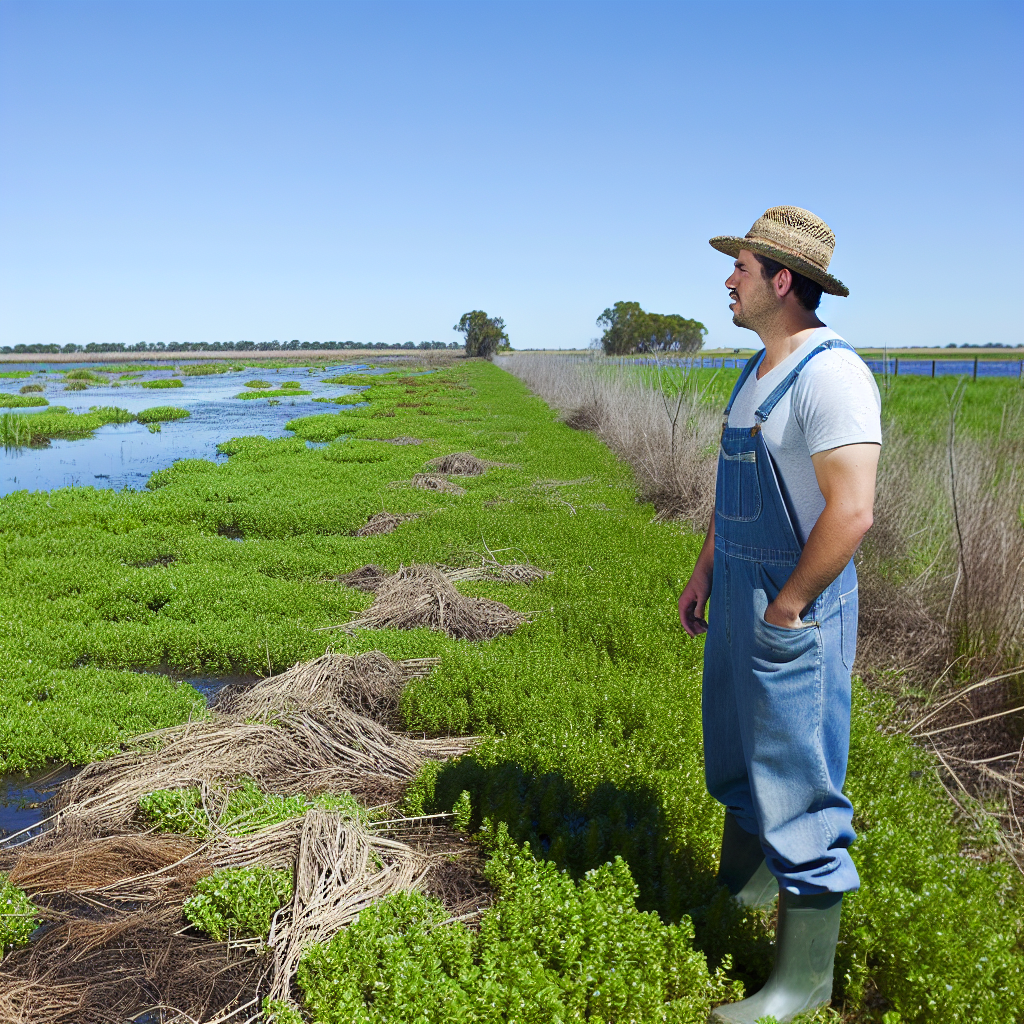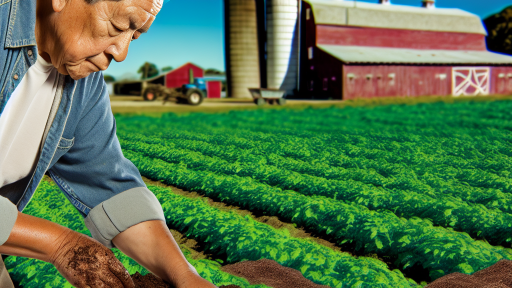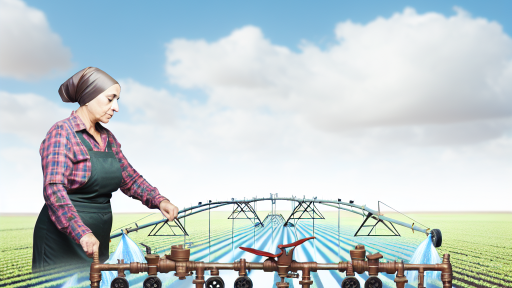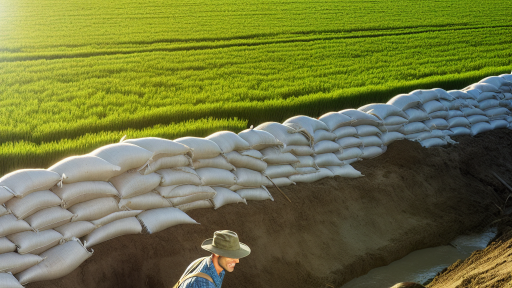Introduction to Wetlands and Their Role in Flood Control
Wetlands are vital ecosystems that support diverse wildlife.
They also serve crucial functions in water management and flood control.
Farmers can benefit significantly from integrating wetlands into their agricultural practices.
Understanding Wetland Ecosystems
Wetlands include marshes, swamps, and bogs.
These areas are characterized by saturated soil conditions.
This unique environment supports specific plant and animal species.
Additionally, wetlands act as natural sponges, absorbing excess rainwater.
The Mechanisms of Flood Control
Wetlands mitigate flooding through absorption and storage of water.
They reduce peak flow during heavy rainfall events.
Moreover, wetlands filter sediments and pollutants from runoff water.
This natural filtration improves water quality in surrounding areas.
Benefits of Integrating Wetlands on Farms
Integrating wetlands enhances agricultural productivity.
It can also increase biodiversity on and around farms.
Farmers enjoy reduced soil erosion and improved water retention.
Additionally, wetland integration may provide alternative income sources.
Transform Your Agribusiness
Unlock your farm's potential with expert advice tailored to your needs. Get actionable steps that drive real results.
Get StartedFor example, farmers can create wildlife habitats for ecotourism.
Practical Steps for Implementation
The first step involves assessing potential wetland areas on farms.
Farmers should consult with environmental experts for guidance.
Next, they can design wetlands to optimize flood control benefits.
This may include creating shallow basins or planting specific vegetation.
Ongoing monitoring ensures wetlands remain functional over time.
Types of Wetlands Suitable for Integration in Farming Practices
Marshes
Marshes are wetlands dominated by herbaceous plants.
They effectively absorb excess water during floods.
Farmers can use marshes to mitigate water runoff.
These ecosystems support wildlife and improve biodiversity.
Additionally, they filter pollutants from surface water.
Swamps
Swamps are wetlands characterized by woody plants.
They provide substantial water storage capacity.
Integrating swamps can help reduce flood impacts on farms.
These areas also enhance soil fertility over time.
Moreover, they create habitats for various species.
Bogs
Bogs are unique wetlands with acidic waters.
They store large amounts of carbon, aiding climate regulation.
Farmers can utilize bogs to improve water retention.
These ecosystems support specialized plants and habitats.
Furthermore, they help in controlling water levels.
Fens
Fens are peat-forming wetlands rich in nutrients.
They often support diverse plant and animal life.
Fens can improve agricultural resilience to flooding.
Showcase Your Farming Business
Publish your professional farming services profile on our blog for a one-time fee of $200 and reach a dedicated audience of farmers and agribusiness owners.
Publish Your ProfileThey retain water, which is beneficial during dry spells.
Farmers can also capitalize on their nutrient-rich soils.
Constructed Wetlands
Constructed wetlands are human-made systems designed for water treatment.
They mimic natural processes to filter contaminants.
Integrating these wetlands can enhance farm sustainability.
They can also reduce operational costs in water management.
Furthermore, constructed wetlands support local wildlife populations.
Benefits of Using Wetlands for Natural Flood Management
Enhancing Water Absorption
Wetlands can effectively absorb excess rainwater.
This absorption helps to reduce surface runoff.
Consequently, it decreases the chances of flooding.
Improving Water Quality
Wetlands act as natural filters for pollutants.
They trap sediments and absorb nutrients.
As a result, they improve the quality of nearby water bodies.
Supporting Biodiversity
Wetlands provide critical habitat for various species.
This biodiversity enhances ecosystem resilience.
Moreover, it contributes to a balanced agricultural environment.
Increasing Soil Moisture
Wetlands help maintain soil moisture levels.
Healthy soil supports crop growth and productivity.
This, in turn, leads to better yields for farmers.
Cost Efficiency
Integrating wetlands can be a cost-effective solution.
They require less maintenance compared to man-made systems.
Thus, farmers can allocate resources more effectively.
Community Benefits
Wetlands can enhance local recreational opportunities.
They can also improve the aesthetic value of the landscape.
These community benefits foster local engagement and support.
Explore Further: Economic Losses From Climate Variability In Farming
Wetlands play a crucial role in natural flood control.
They absorb excess rainwater and reduce runoff.
Moreover, they provide habitat for diverse wildlife.
Begin by evaluating your farm’s topography.
Identify areas prone to flooding during heavy rain.
Also, consider soil types which support various wetland plants.
Design wetlands to maximize their flood control capacity.
Incorporate features such as shallow ponds and marshes.
These elements retain water and slowly release it.
Choose low-lying areas near existing water sources.
Ensure they are close enough to crops to reap benefits.
Additionally, avoid placing wetlands in valuable arable land.
Blend wetland areas with your current crop layout.
Plant native vegetation around wetland borders.
Showcase Your Farming Business
Publish your professional farming services profile on our blog for a one-time fee of $200 and reach a dedicated audience of farmers and agribusiness owners.
Publish Your ProfileThis enhances biodiversity and soil stability.
Regular maintenance ensures wetland effectiveness.
Periodically remove invasive species that disrupt ecosystems.
Check water levels to maintain optimal conditions for plants.
Seek guidance from local agricultural extensions.
They can provide insights into wetland management practices.
Furthermore, consider collaborating with environmental organizations.
Monitor the wetland’s performance during rain events.
Track improvements in flood control effectiveness over time.
Adjust management strategies based on observed outcomes.
Learn More: The Economic Case for Adopting Climate-Sensitive Farming
Case Studies: Successful Examples of Wetland Integration on Farms
Creating Resilient Landscapes in Illinois
In central Illinois, the Green Meadow Farms successfully integrated wetlands.
This farm utilized a series of connected wetlands to manage stormwater runoff.
As a result, they significantly reduced flooding risks during heavy rains.
Farmers reported improved soil moisture retention and crop health.
Additionally, this approach enhanced local biodiversity, attracting various wildlife.
Innovative Solutions in Florida
On the sunny coasts of Florida, the Sunshine Creek Farm adopted wetland strategies.
They implemented a constructed wetland system to filter nutrient runoff from fields.
This greatly improved water quality in nearby waterways.
Moreover, the farm experienced decreased waterlogging during storms.
As a bonus, the wetland became a habitat for birds and aquatic life.
Enhancing Ecosystems in Washington State
At Evergreen Farm in Washington, wetlands were integrated to enhance ecosystems.
The farmers created swales and retention ponds alongside their crops.
This clever design helped capture and store rainfall effectively.
Consequently, they mitigated flood risks while improving irrigation efficiency.
Local streams benefited, leading to healthier fish populations in the area.
Successful Partnerships in Maine
In Maine, Acadia Farms partnered with environmental organizations for wetland restoration.
They restored natural wetlands that had been degraded over time.
This initiative improved flood resilience and provided crucial wildlife corridors.
Farmers noted a positive change in pest control through enhanced predator habitats.
The collaboration also drew community support and increased awareness about wetland importance.
Results and Benefits
Wetland integration provides multiple benefits to farms and ecosystems alike.
These include improved flood control, enhanced soil health, and increased biodiversity.
Furthermore, farmers can gain economic advantages through more resilient operations.
Additionally, these practices promote community engagement and environmental stewardship.
The successful cases exemplify the potential of wetlands in agriculture.
Find Out More: Investing In Climate Smart Farming Techniques

Regulatory Considerations and Environmental Compliance
Understanding Regulatory Frameworks
Farmers must navigate various regulations when integrating wetlands.
These regulations often aim to protect water quality and ecosystems.
Understanding the Clean Water Act is crucial for compliance.
Showcase Your Farming Business
Publish your professional farming services profile on our blog for a one-time fee of $200 and reach a dedicated audience of farmers and agribusiness owners.
Publish Your ProfileThis act governs the discharge of pollutants into waterways.
Additionally, local ordinances may impose specific requirements.
Farmers should consult their state’s agricultural agency for guidance.
Permitting Processes
Securing the necessary permits is essential before starting wetland integration.
Stream bank stabilization may require permits under federal law.
State and local levels may also have their own permitting processes.
Local authorities often focus on land use and environmental impacts.
Farmers must prepare to submit detailed project plans with applications.
Environmental Impact Assessments
Conducting environmental impact assessments is often mandatory.
These assessments evaluate potential effects of wetland integration on ecosystems.
They also help identify mitigation strategies to minimize negative impacts.
Farmers should employ ecological experts to ensure thorough assessments.
Best Management Practices
Implementing best management practices ensures regulatory compliance.
Farmers should adopt sustainable practices to enhance water quality.
Common practices include buffer strips and sediment control measures.
These actions also support biodiversity in agricultural landscapes.
Working with Stakeholders
Engaging with local stakeholders fosters collaboration and support.
Farmers may benefit from partnerships with conservation organizations.
These organizations can provide resources and technical assistance.
Communicating with local communities promotes understanding and transparency.
Monitoring and Reporting Requirements
Regular monitoring is essential for maintaining compliance with regulations.
Farmers need to document their practices and impacts on wetlands.
Periodic reporting to regulatory agencies may be necessary.
Adhering to these requirements fosters accountability in agricultural operations.
Find Out More: Effective Flood Management Strategies for Farmers
Potential Challenges and Solutions in Wetland Integration
Understanding Integration Challenges
Integrating wetlands on farms presents several unique challenges.
Land use competition often arises between wetland areas and agricultural fields.
This competition can reduce available acreage for crops.
Additionally, water management becomes complicated with wetland integration.
Farmers must balance water retention and drainage adequately.
Moreover, regulatory hurdles can impede the establishment of wetlands.
Farmers may need to navigate complex environmental laws and policies.
Addressing Land Use Conflict
Finding a solution for land use conflict is critical for successful integration.
Farmers can use zoning to designate specific areas for wetlands.
This approach minimizes interference with primary agricultural activities.
Collaborative agreements can also benefit both farmers and conservationists.
Such partnerships can optimize land while promoting biodiversity.
Navigating Water Management Challenges
Effective water management is vital for integrating wetlands successfully.
Farmers should consider installing drainage systems for proper water flow.
These systems can help prevent flooding in agricultural areas.
Showcase Your Farming Business
Publish your professional farming services profile on our blog for a one-time fee of $200 and reach a dedicated audience of farmers and agribusiness owners.
Publish Your ProfileAdditionally, implementing water retention strategies can enhance wetland functionality.
Using sensors to monitor soil moisture levels aids in managing irrigation.
Complying with Regulations
Navigating regulatory challenges requires diligence and knowledge.
Farmers can benefit from consulting with legal or environmental experts.
Understanding relevant laws aids in streamlining the integration process.
Furthermore, participating in workshops can provide essential insights.
Networking with other farmers also fosters knowledge sharing on compliance.
Long-term Sustainability Practices
Adopting sustainable farming practices ensures the success of wetland integration.
Farmers should consider crop rotation to maintain soil health.
Cover crops can also reduce soil erosion and improve water retention.
Engaging in continuous education on wetland management enhances skills.
Ultimately, a commitment to sustainability will yield positive results.
Future Trends in Wetland Management and Agriculture
Increased Integration of Wetlands
Farmers are beginning to integrate wetlands into their agricultural practices.
This integration offers natural flood control solutions for farmlands.
Moreover, it enhances local biodiversity and soil health.
Wetlands act as natural sponges, absorbing excess rainwater.
As a result, they help mitigate the impacts of heavy rainfall.
Innovative Technologies for Wetland Management
Emerging technologies are revolutionizing wetland management strategies.
Farmers can now monitor wetland health using satellite imagery.
Data analytics helps in making informed decisions quickly.
Additionally, automated systems optimize water levels in wetlands.
These advancements support efficient farm operations while preserving ecosystems.
Collaboration with Environmental Organizations
Farmers are increasingly collaborating with environmental organizations.
These partnerships facilitate funding and resources for wetland projects.
Furthermore, they provide expertise on best management practices.
Such collaboration promotes sustainable agriculture and conservation efforts.
Participants often benefit from shared knowledge and resources.
Regulatory Changes and Incentives
Governments are exploring regulatory changes to encourage wetland restoration.
Incentives such as tax breaks are promoting wetland adoption.
Farmers who implement wetland systems may qualify for financial aid.
These incentives help reduce initial setup costs.
Consequently, more farms are willing to invest in natural flood control measures.
Education and Awareness Campaigns
Education plays a vital role in the future trends of wetland management.
Awareness campaigns inform farmers about the benefits of wetlands.
Workshops provide hands-on training for effective wetland integration.
Moreover, success stories from peers encourage wider adoption.
Ultimately, increased knowledge leads to better decision-making on farms.
Additional Resources
The need to integrate flood and drought disaster risk reduction …




